Introduction
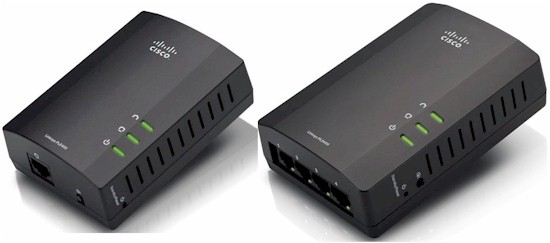
| At a Glance | |
|---|---|
| Product | – Cisco Linksys PLE400 Powerline AV 1-Port Network Adapter (PLEK400 – kit of 2) – Cisco Linksys PLS400 Powerline AV 4-Port Network Adapter (PLSK400 – kit of 2) |
| Summary | 200 Mbps HomePlug AV powerline adapters based on Broadcom chipsets |
| Pros | • Can provide higher throughput than other HomePlug AV devices |
| Cons | • No powerline quality LED • Not available as single adapters |
Cisco recently got back into powerline networking with the release of two 200 Mbps HomePlug AV adapters. Cisco told me they elected to stay with 200 Mbps powerline while most other vendors have also fielded 500 Mbps Homeplug AV compatible adapters because Homeplug AV is an approved standard while 500 Mbps powerline is not.
At any rate, Cisco now has the PLE400 Powerline AV 1-Port Network Adapter and PLS400 Powerline AV 4-Port Network Adapter, which come in two kits. The PLEK400 contains two PLE400s, while the PLSK400 contains one PLE400 and one four-port PLS400. The adapters come only in these kits—you can’t buy single adapters.
The HomePlug Certified Products database shows the individual adapters and their kits as Homeplug AV Certified. And the product boxes even display the HomePlug AV Certification logo.
Like other 200 Mbps powerline adapters, the Ethernet ports on both products are 10/100, not Gigabit. And while you can’t find this spec on the product webpages, the label on each adapter shows a 100 – 240 VAC rating.
Figure 1 from the product support page FAQ, shows the usual Power, Ethernet and Powerline lights. But unlike other current powerline adapters I’ve seen, the Powerline indicator doesn’t change color to indicate link quality.
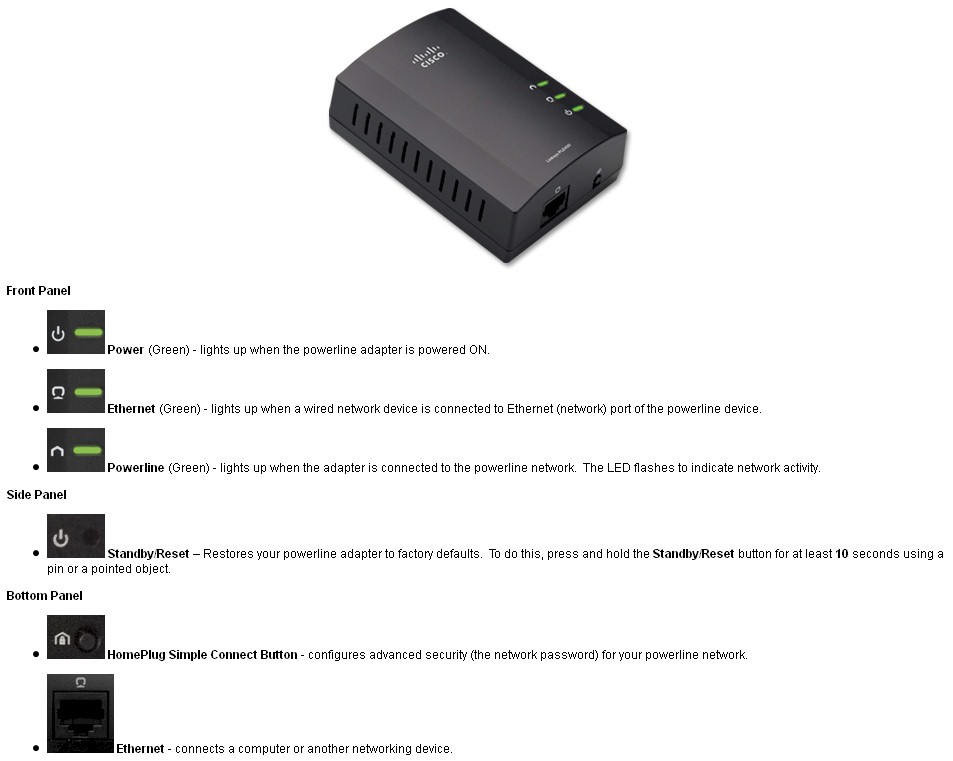
Figure 1: PLE400/PLS400 lights, buttons, ports
Inside
Peeking inside powerline adapters has gotten kind of boring, since everything I’ve reviewed to date has used the same Qualcomm Atheros chipsets. So I expected to see the INT6400 / INT1400 chipset I found in most of the adapters in the HomePlug AV Adapter Roundup.
I was quite surprised, then, by my first sighting of Broadcom-based powerline designs! Both adapters use a Broadcom BCM60321 Powerline Networking SoC. Qualcomm Atheros-based designs have separate analog front-end and digital chips. But Broadcom has opted to combine both in one device with good results, as you’ll see in the Performance section.
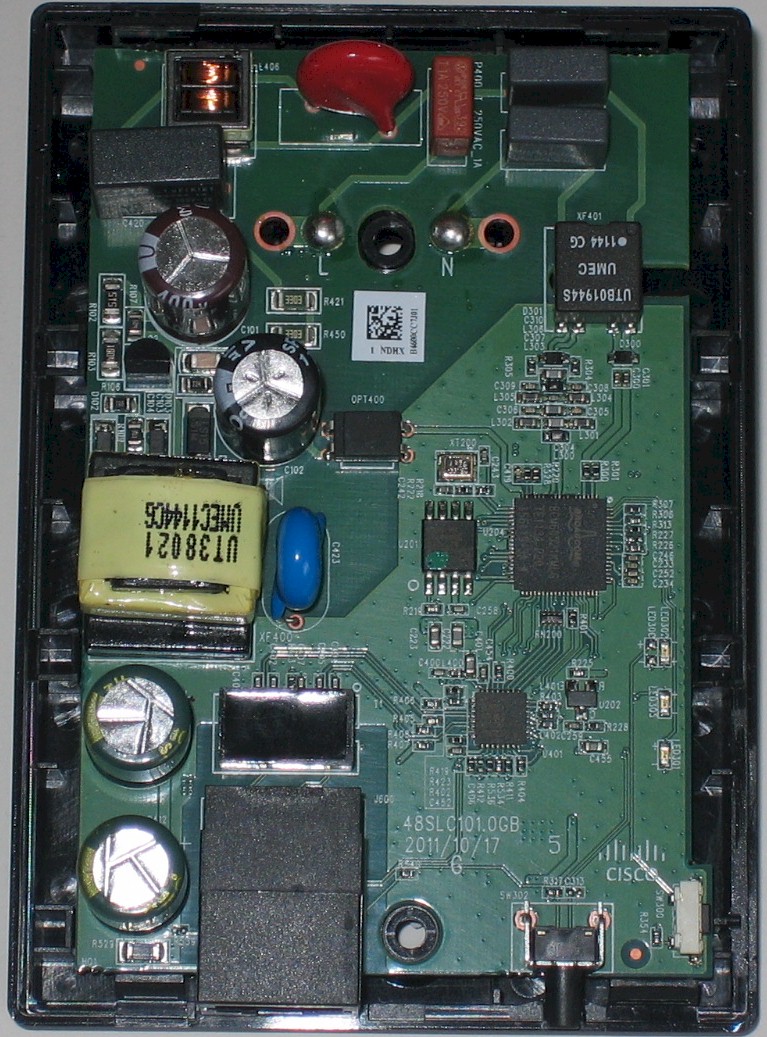
Figure 2: Inside the PLE400
The PLS400 has a BCM53101 7 port managed 10/100 Roboswitch to provide the four-port 10/100 switch, while the PLE400 has a Broadcom BCM5241 single port 10/100 Ethernet PHY. An unspecified amount of RAM is inside the BCM60321 and I saw 1 MB of Macronix flash on the PLE400 board (to the left of the BCM60321 in Figure 2). I suspect the PLS400 has the same amount of flash, probably on the underside of the board, which is soldered to the plug prongs that are fixed to the case.
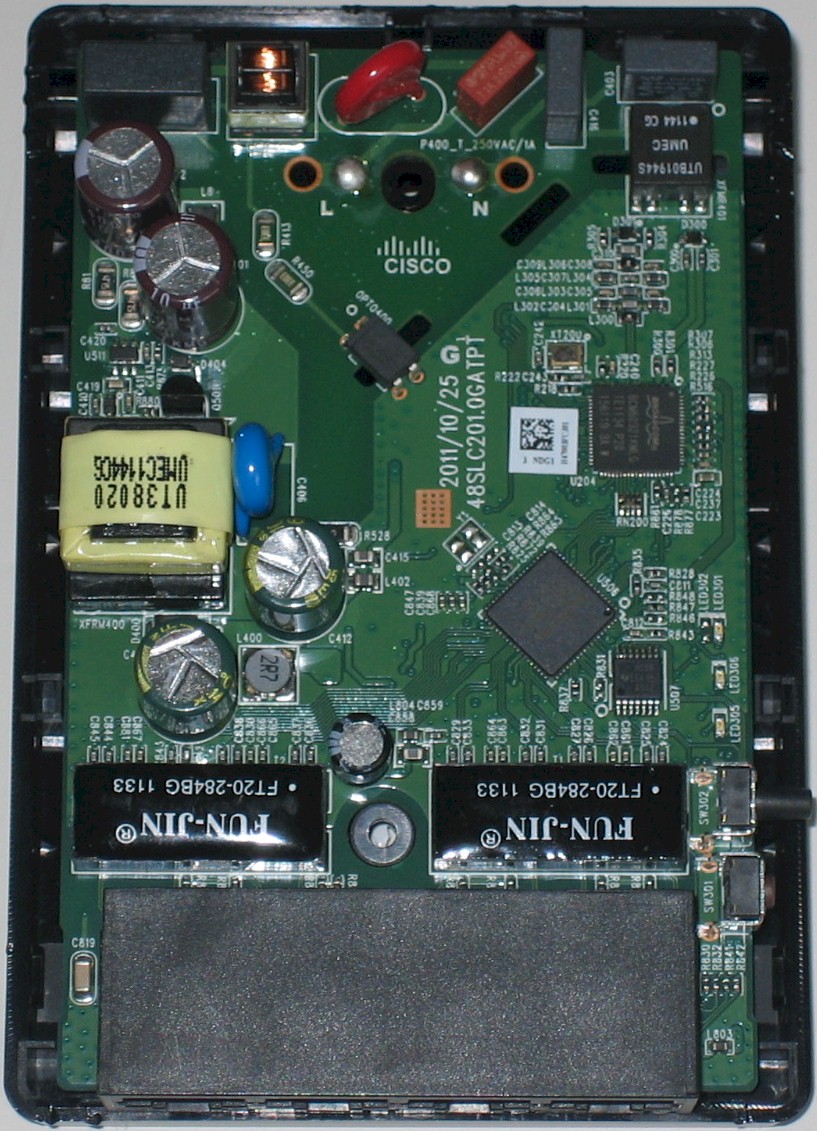
Figure 3: Inside the PLS400
Admin
Like all HomePlug AV devices, the PLE400 and PLS400 ship with 128 bit AES encryption enabled, using the same default key, so you can just plug and play. They also have buttons that can be used to set a different security code. Setting the code works like setting up a Wi-Fi WPS connection. You press the button on one device until a LED starts blinking. You then have two minutes to press the button on a second adapter to complete the setting.
You can also usually change the security code using a utility program. Cisco doesn’t include one in the product boxes. But both Windows and MacOS versions of the Cisco Powerline AV utility are available as downloads. The powerline utilities for Qualcomm Atheros-based products all require WinPCap. But that didn’t appear to be required for these adapters, or at least I didn’t see the installer install it.
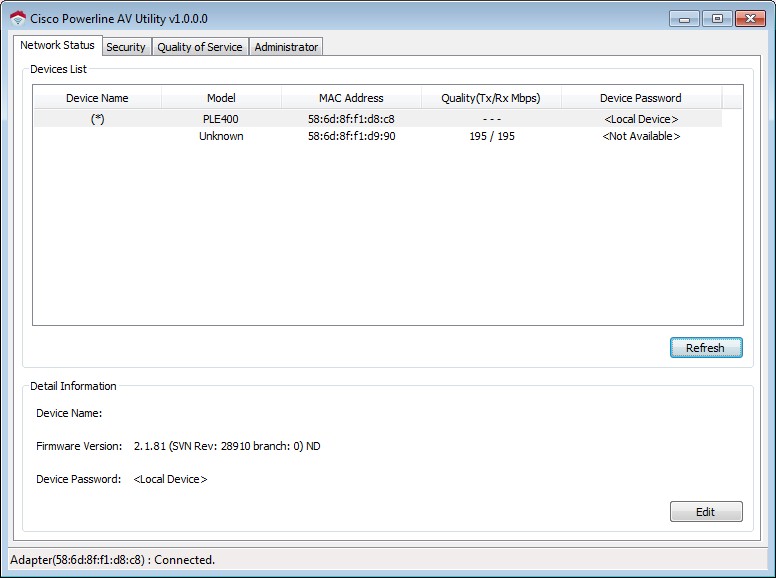
Figure 4: Cisco Powerline AV utility – Status
Figure 4 provides a taste of the utility and you can see the other three screens in the Gallery.
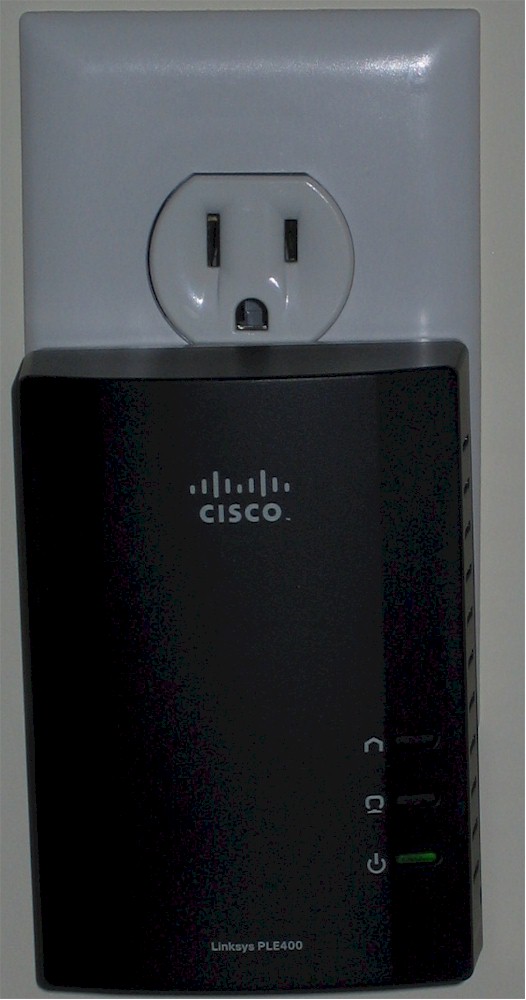
View of the PLE400 plugged in so you can judge adjacent socket interference.
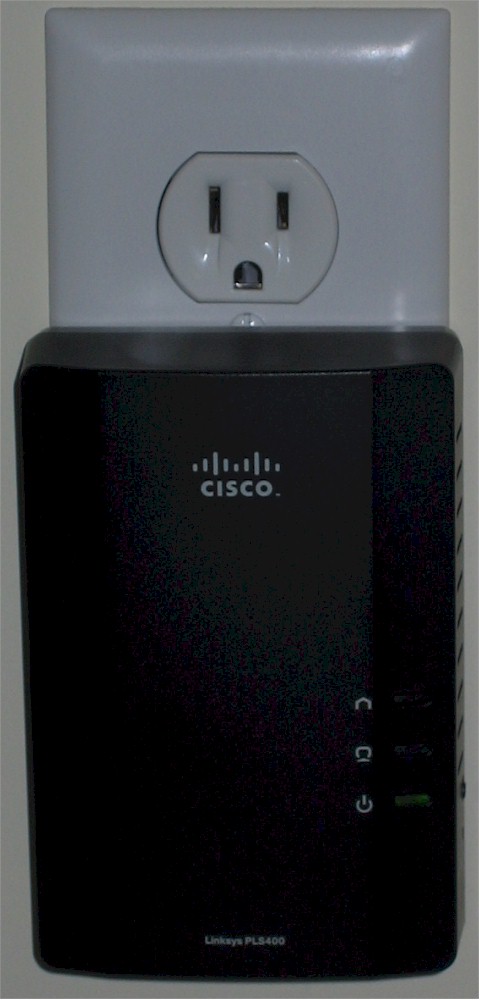
The larger PLS400 actually is a bit shorter from plug to top than the PLE400

The status page for the Cisco Powerline AV Utility shows the transmit and receive link rates and device firmware version.
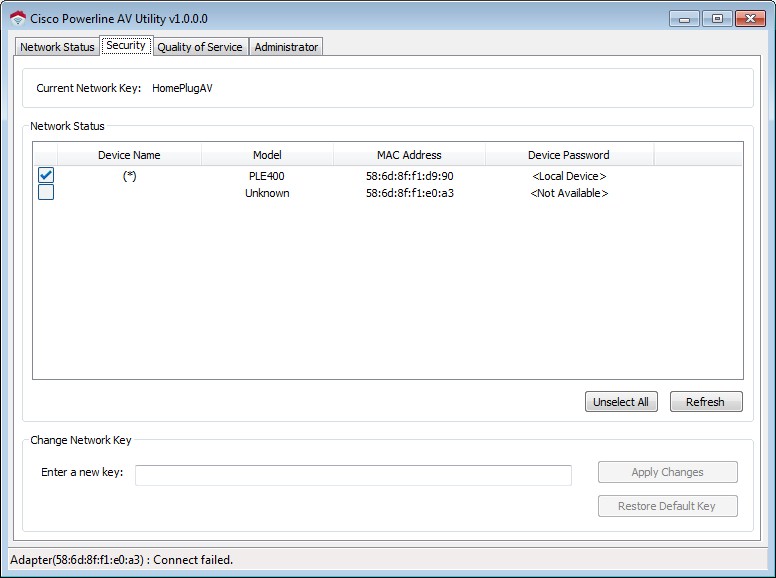
You can change the security key on this page

There isn’t much you can do on the QoS page, just these enables.
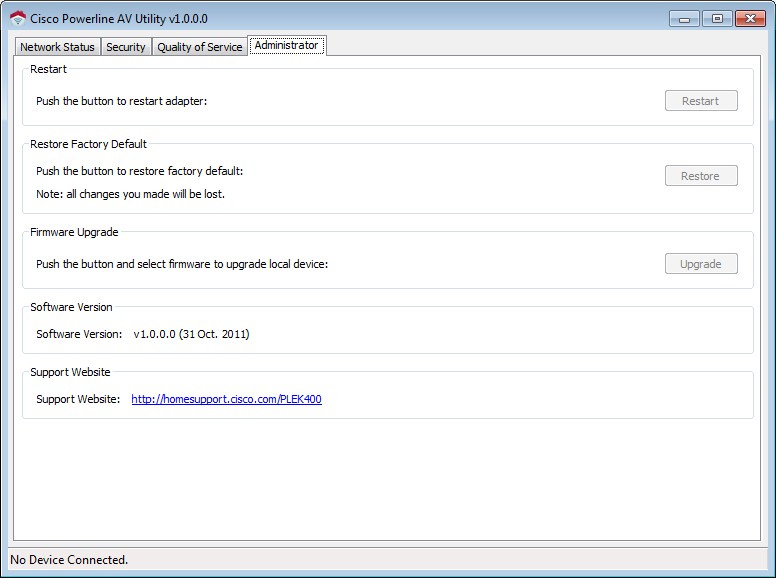
Admin page features.
Performance
I tested all the adapters at three locations in my home using this procedure. I wanted to test two of the same adapter, but Cisco sent one of each kit, instead of two of the PLSK400. So the PLS400 was tested with a PLE400.
I ran separate up and downlink tests at each of three test locations. I also ran simultaneous up/downlink and four-stream tests at Location A. All results have been entered into the Powerline Performance Charts.
Figure 5 shows average uplink throughput for all three test locations and Figure 6 shows downlink. I haven’t added the ability to filter the charts for 200 and 500 Mbps adapters, so all tested adapters are shown.
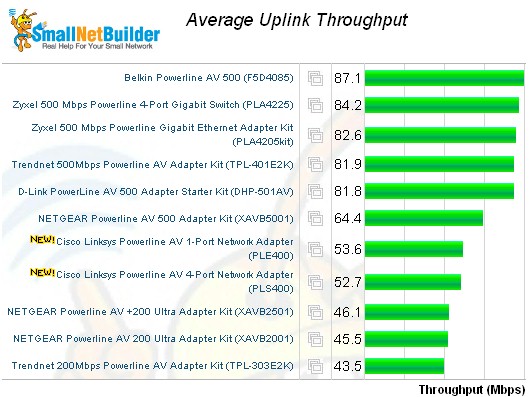
Figure 5: Average uplink throughput
The new Linksys adapters seem to have an edge over the Qualcomm-Atheros adapters when looking at total average throughput.
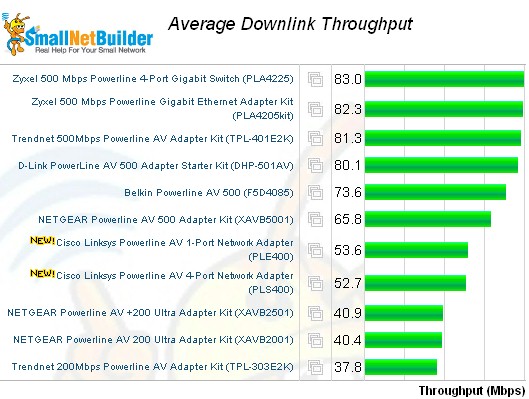
Figure 6: Average downlink throughput
The throughput vs. location plots in Figures 7 and 8 show that the Linksys adapters really outperform the other adapters in the Location A same-outlet test.
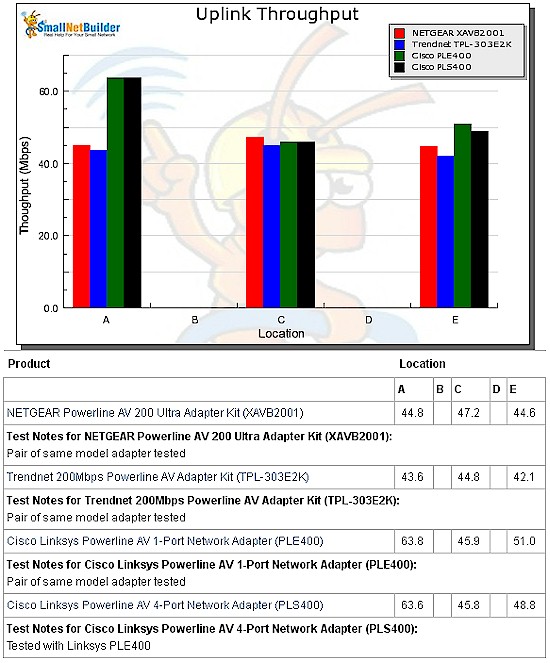
Figure 7: Uplink throughput vs. location
But the difference isn’t as pronounced when the adapters are moved apart or, as Location C shows, in all locations.
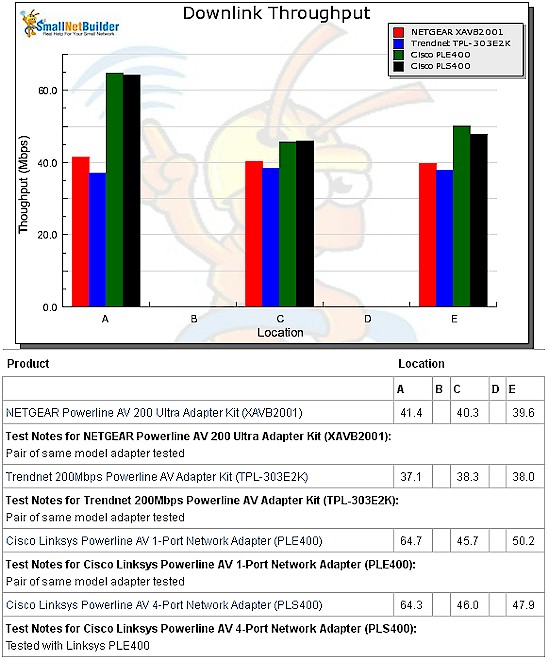
Figure 8: Downlink throughput vs. location
Use the Powerline Charts to explore further.
Closing Thoughts
Even though the PLE400 and PLS400 can provide higher throughput than other 200 Mbps HomePlug AV adapters, you probably won’t notice the difference in real-world use. And they’re not the cheapest HomePlug AV adapters going–those would be the TRENDnet TPL-303E2K, which you can get for around $60 a pair.
But if you want to spend about $30 more, and about $10 less than a NETGEAR XAVB2001 kit, you’ll get the comfort of knowing that those bits are probably flowing a bit faster through your home or apartment’s power lines.
